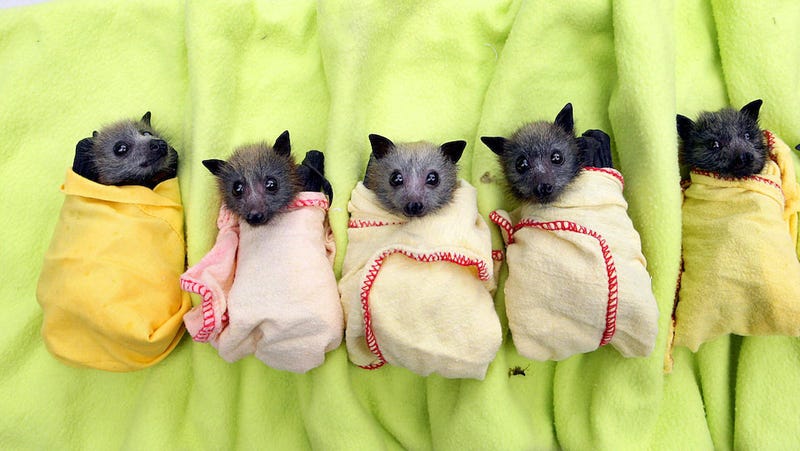 Photo: Getty
Photo: Getty
If you read Stellaluna as a child, chances are, you like bats. Who wouldn’t? These nocturnal cuties are full of cuddles. Sadly, they’re also teeming with disease. While we understand the impulse to snuggle a bat, it’d be in their best interest—and ours—if humans just left them alone.
New research from the EcoHealth Alliance suggests bats carry the highest risk of zoonotic transmission, meaning they’re the animal most likely to give humans a disease. Though that’s a mildly terrifying and completely legitimate concern, bats play many critical roles in their respective ecosystems. When we just let them live, they can do a lot of good.
“Frugivorous bats play an important role in the planting and regeneration of forest in the tropics, thanks to the action of dispersing seeds over the landscape,” Irene Conenna, an ecologist at the University of Helsinki, told Gizmodo. “In addition, insectivorous bats play a role in the control of arthropod pests in agricultural landscapes, and this might lead to higher yields and a reduced need to deforest new areas for agricultural purposes.”
Recently, Conenna and some colleagues analyzed various populations of island bats to understand their decline in recent years. Factors like habitat destruction and invasive species like cats and snakes have caused trouble for island bats, Conenna said. That’s just a fraction of what bats are facing—for other species, there are even more concerns.
“A huge conservation issue for bats worldwide is the spread of the pathogen Pseudogymnoascus destructans, a fungus that infects the ears, muzzle, and wings of bats,” wildlife conservationist Imogene Cancellare told Gizmodo. “In the northeastern US alone, the USGS estimates that bat populations have declined by 80 percent, which is hugely alarming.”
The best way to keep bats (and humans) healthy is to support bat conservation organizations—from afar. And be careful out there, spelunkers.